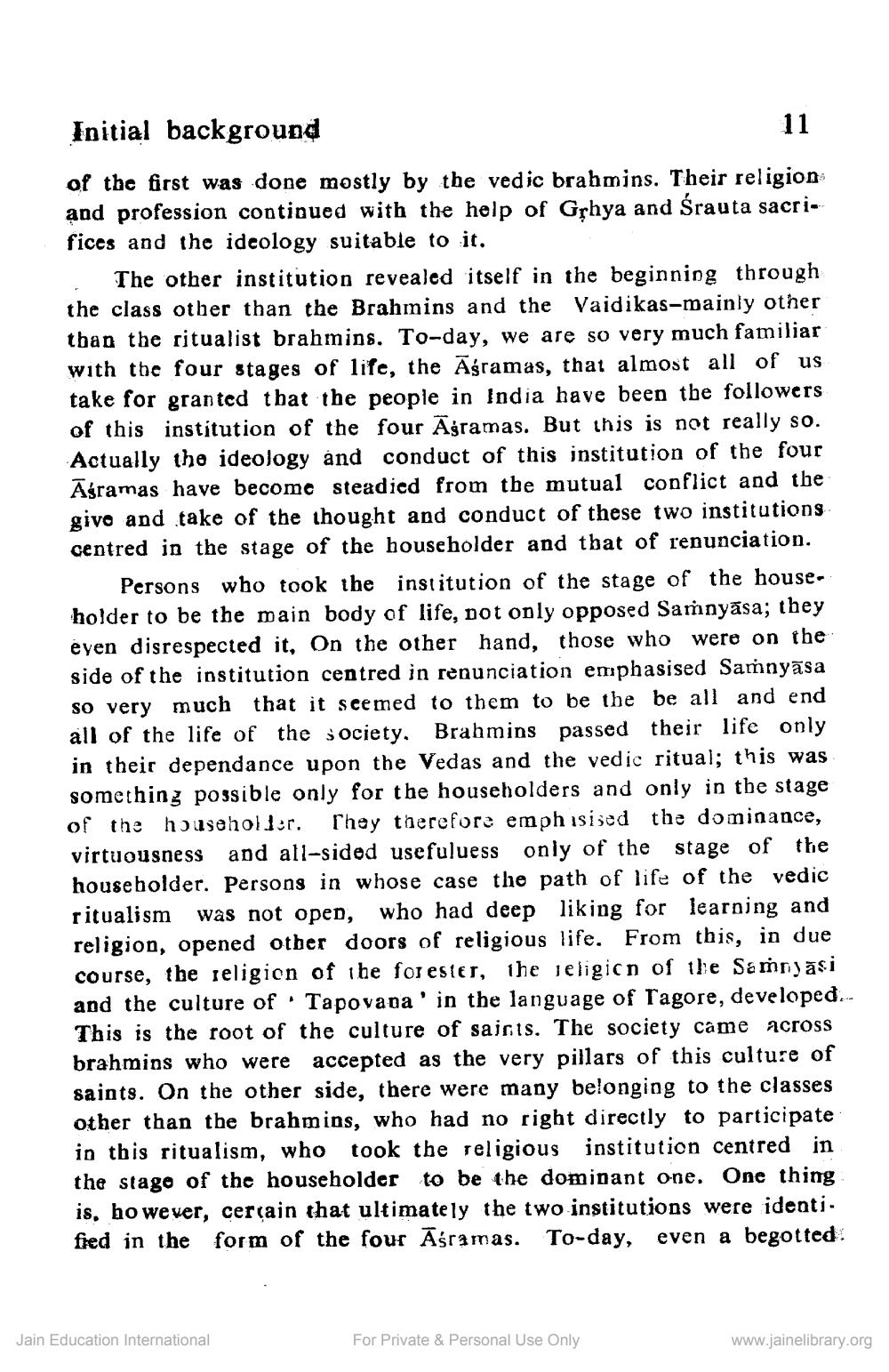________________
Initial background
11
of the first was done mostly by the vedic brahmins. Their religion and profession continued with the help of Gșhya and Srauta sacrifices and the ideology suitable to it. . The other institution revealed itself in the beginning through the class other than the Brahmins and the Vaidikas-mainly other than the ritualist brahmins. To-day, we are so very much familiar with the four stages of life, the Aśramas, that almost all of us take for granted that the people in India have been the followers of this institution of the four Āgramas. But this is not really so. Actually the ideology and conduct of this institution of the four Asramas have become steadied from tbe mutual conflict and the givo and take of the thought and conduct of these two institutions centred in the stage of the householder and that of renunciation.
Persons who took the institution of the stage of the house. holder to be the main body of life, not only opposed Samnyāsa; they eyen disrespected it, On the other hand, those who were on the side of the institution centred in renunciation emphasised Samnyāsa so very much that it seemed to them to be the be all and end
1 of the life of the society, Brahmins passed their life only in their dependance upon the Vedas and the vedic ritual; this was something possible only for the householders and only in the stage of the householder. They therefore emph isised the dominance, virtuousness and all-sided usefuluess only of the stage of the householder. Persons in whose case the path of life of the vedic ritualism was not open, who had deep liking for learning and religion, opened otber doors of religious life. From this, in due course, the religion of the forester, the religion of the Samnyasi and the culture of Tapovada' in the language of Tagore, developed..
This is the root of the culture of saints. The society came across brahmins who were accepted as the very pillars of this culture of saints. On the other side, there were many belonging to the classes other than the brahmins, who had no right directly to participate in this ritualism, who took the religious institution centred in the stage of the householder to be the dominant one. One thing is, however, cerçain that ultimately the two institutions were identi. fied in the form of the four Āśramas. To-day, even a begotted.
Jain Education International
For Private & Personal Use Only
www.jainelibrary.org




